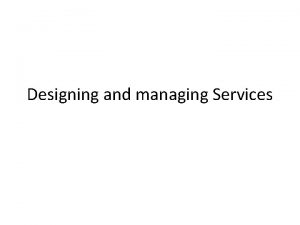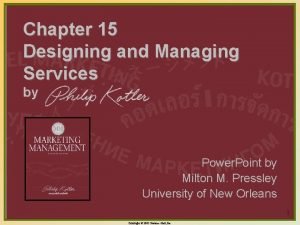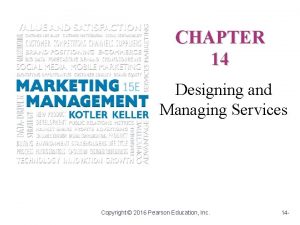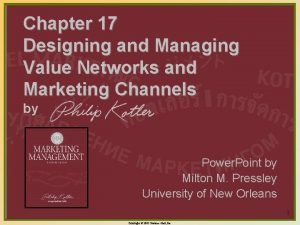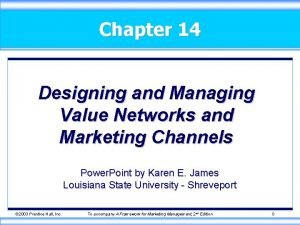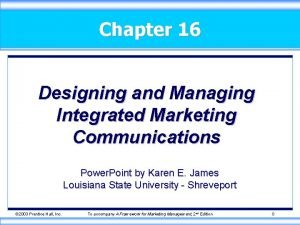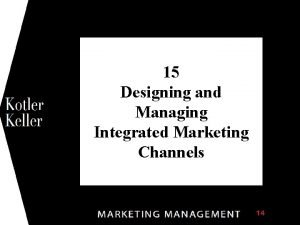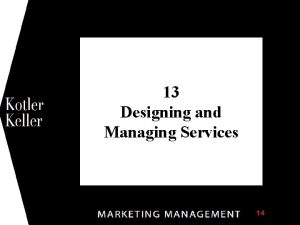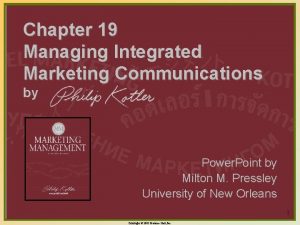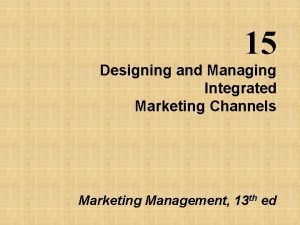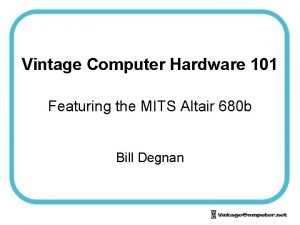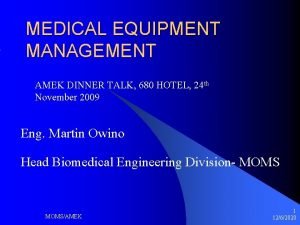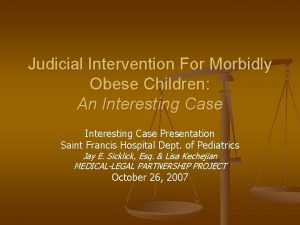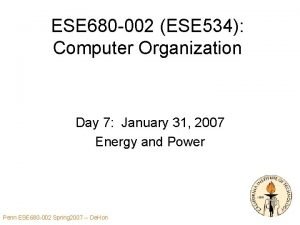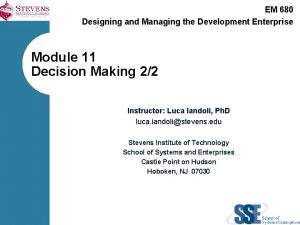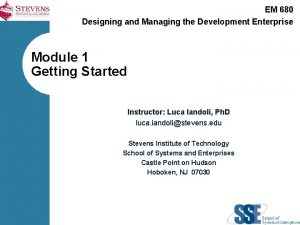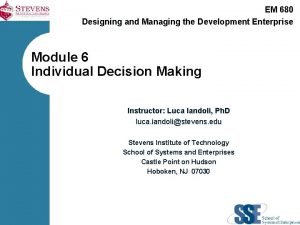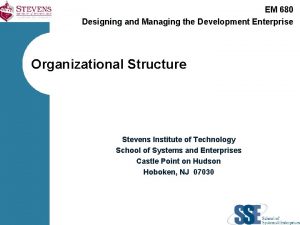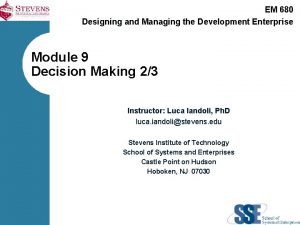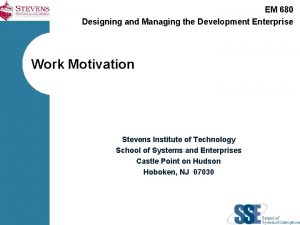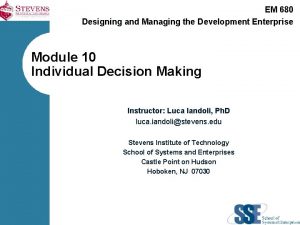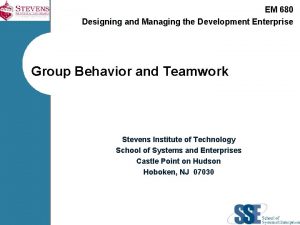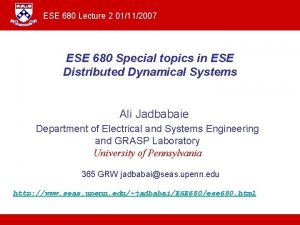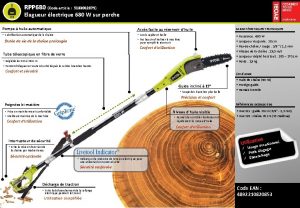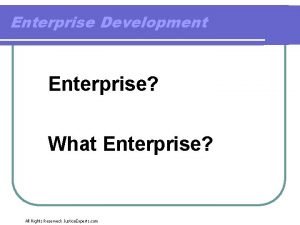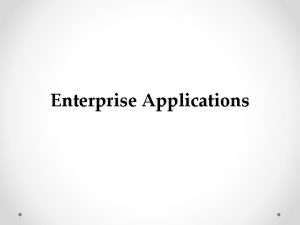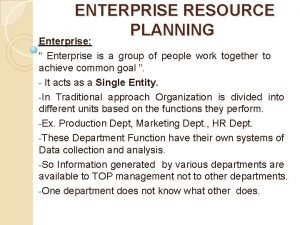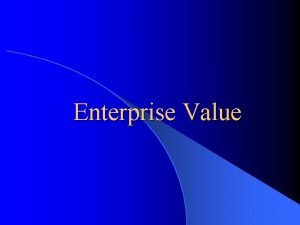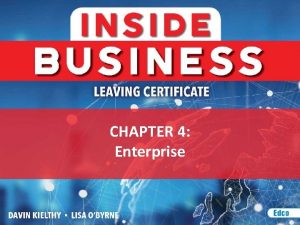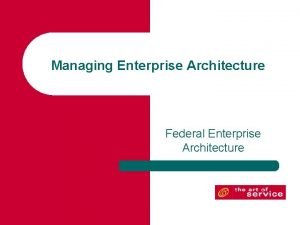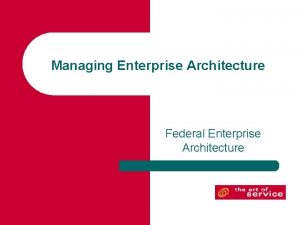EM 680 Designing and Managing the Development Enterprise



























- Slides: 27

EM 680 Designing and Managing the Development Enterprise Module 13 Work Motivation Stevens Institute of Technology School of Systems and Enterprises Castle Point on Hudson Hoboken, NJ 07030 Copyright 2014 : Stevens Institute Of Technology

Knowledge Objectives 1. 2. 3. 4. Define work motivation and explain why it is important to organizational success. Theories of motivation Describe how to enrich jobs and how job enrichment can enhance motivation. Based on all theories of work motivation, describe specific actions that can be taken to increase and sustain employee motivation. This presentation contains mutiple references to Hitt, M. A. , C. C. Miller, and A. Colella. (2005). Organizational Behavior: A Strategic Approach. Hoboken, NJ: Wiley & Sons.

Motivation l Motivation – Force within a person determining willful direction, intensity, and persistence of the person’s efforts in the achievement of specific goals not due to ability or environmental demands (necessity) Copyright 2014 : Stevens Institute Of Technology

Motivation l level of Execution is a function of individual Capability, organizational Capability and Motivation (Zollo, 2008): E= 2 mc Copyright 2014 : Stevens Institute Of Technology

Content Theories: Need Hierarchy Satisfied Needs People motivated by desire to. Needs Unsatisfied satisfy specific needs, arranged in a Selfhierarchical order Actualization Lower level needs must be Esteem Needs satisfied before a person can be motivated by higher level needs Social and Belongingness Needs Maslow’s Need Hierarchy Copyright 2014 : Stevens Institute Of Technology Once Lower level needs are satisfied additional Safety Needs motivation can be obtained only through Physiological incentives linked. Needs to the higher levels

Content Theories: Need Hierarchy Self. Actualization Growth Esteem Needs Social and Belongingness Needs Relatedness Safety Needs Existence Physiological Needs Maslow’s Need Hierarchy Copyright 2014 : Stevens Institute Of Technology

Hierarchy of Needs: Another View More Money False hope of advancement “Employees will not develop a need for things at the higher levels of the pyramid until they have totally satisfied their needs at lower levels. Make sure they get plenty of the stuff on the lower levels, but not so much that they develop a need for more money. ” Recognition Thrill of empowerment Artificial challenge created by poor planning and inadequate resources Coffee, donuts, caffeinated soft drinks Employee Hierarchy of Needs Copyright 2014 : Stevens Institute Of Technology Dilbert © 2005, United Feature Syndicate, Inc

Two-Factor Theory (Herzberg) l Job factors leading to satisfaction are different from those leading to dissatisfaction, and vice versa Copyright 2014 : Stevens Institute Of Technology

Two-Factor Theory When increased, lead to greater satisfaction When deficient, lead to greater dissatisfaction Motivators Hygienes Achievement Salary Recognition Responsibility Technical supervision Working conditions Opportunity for advancement or promotion The work itself Potential for personal growth Company policies, administration, and procedures Interpersonal relationships with peers, supervisors, and subordinates Status Security Copyright 2014 : Stevens Institute Of Technology

Process Theories: Expectancy Theory (Vroom) Motivational Force = Effort E Performance E = Subjective probability that effort will lead to performance I = Subjective probability that performance will lead to various outcomes and associated rewards V = Valence = Expected satisfaction with each outcome I Reward V M=Ex. Ix. V Copyright 2014 : Stevens Institute Of Technology

Process Theories: Expectancy Theory l So … to increase motivation – – – Increase associates’ confidence that exerting effort will lead to higher levels of performance (e. g. through training) Increase instrumentality by clearly linking high performance to rewards (e. g. pay for performance) Increase valence by providing rewards that are highly valued (provide rewards employees desire) Copyright 2014 : Stevens Institute Of Technology

Process Theories: Equity Theory (Adams) l Motivation is based on a person’s assessment of the ratio of the outcomes or rewards (pay, status) he receives for input on the job (effort, skills) compared with the same ratio for a comparison other My Outcomes vs. Other’s Outcomes My inputs Other’s Inputs Copyright 2014 : Stevens Institute Of Technology

Process Theories: Equity Theory IF My Outcomes My inputs = Other’s Outcomes Other’s Inputs Employees may – – – Increase or decrease inputs Change their outcomes Distort their perceptions of inputs and/or outcomes Distort perceptions of other’s inputs and/or outcomes Leave the organization Copyright 2014 : Stevens Institute Of Technology

Goal-Setting Theory (Ryan, Locke, Latham) l Goal-setting theory – Difficult and specific goals increase human performance because the affect effort, persistence, and direction of behavior l l Goal difficulty Goal commitment Participation in setting goals Feedback Copyright 2014 : Stevens Institute Of Technology

Motivating Associates: Integration of Theory Exhibit 6 -4 Motivation Practices Resulting from Motivation Theories Motivation Practices Motivation Theories Need Hierarchies Maslow Find Meaningful Tie Rewards Redesign Provide Clarify Individual to Jobs Feedback Expectations Rewards Performance and Goals X X X Herzberg’s Two-Factor Theory X Expectancy Theory X X Equity Theory X X X X Goal-Setting Theory Exhibit 6 -3: Factors Affecting Goal Commitment Hitt, M. A. , C. C. Miller, and A. Colella. (2005). Organizational Behavior: A Strategic Approach. Hoboken, NJ: Wiley & Sons.

Motivating Associates: Integration of Theory l Tie individual rewards to individual needs – – l Individuals differ on what they find “rewarding” Do not overemphasize extrinsic rewards Tie rewards to performance – – Performance is difficult to measure Intrinsic rewards may work when extrinsic rewards are unavailable Copyright 2014 : Stevens Institute Of Technology

Motivating Associates: Integration of Theory l Redesign jobs – – Job enlargement: add tasks of equal complexity to increase variety and use of skills Job enrichment: make jobs more motivating by increasing responsibility l l l Task significance Autonomy Feedback Copyright 2014 : Stevens Institute Of Technology

Motivating Associates: Integration of Theory l Provide feedback – – – In conjunction with goals Repeat at regular intervals Provide information as to how performance can be improved Come from a credible source Focus on the performance, not the person Copyright 2014 : Stevens Institute Of Technology

Clarify Expectations and Goals l l Align individual goals with organizational goals Management by Objectives – – Together, the supervisor and associate establish the associate’s short-term performance goals Regular meetings are held to discuss the associate’s progress in meeting the goals Checkpoints and benchmarks are established to measure the associate’s progress A discussion is held at the end of some time period to evaluate the associate’s accomplishment of the goals Copyright 2014 : Stevens Institute Of Technology

Is Monetary Reward an effective motivator? l What do you think? Copyright 2014 : Stevens Institute Of Technology

Why Incentive Plans may fail (Kohn, 1993) l Rewards only temporarily change what we do, do not create an enduring commitment – – – Cannot alter attitudes underlying behavior Undermine intrinsic motivation Reflect a behaviorist paradigm in which human behavior is simplistically assumed to be a set of stimulus/answer relations Copyright 2014 : Stevens Institute Of Technology

Why Incentive Plans may fail l As cognitive complexity of work increases impact of rewards on performance decreases

Why Rewards Fail l Pay is not a motivator/undermines interest – Pay is a hygiene factor not a motivator (Herzberg) l – – “Scientist look at rewards as not necessarily an enabler but an entitlement. What turns me on as a scientist is science. Money is nice but don’t buy me. ” Encourage thinking about what one will get, not what is the best way to do the task Diminishes intrinsic motivation l Applying extrinsic rewards to intrinsically motivated activities can diminish interest (Deci, 1975; Amabile et al. , 1998) … also found in open source communities (Von Krogh, 2003). Copyright 2014 : Stevens Institute Of Technology

Some Alternatives l Skill-based pay – base rewards upon what people know as opposed to what they do – l “rewards should be designed to recognize creative efforts but not to be carrots for every specific task” (Amabile) Use team performance metrics to allocate rewards differently within the team – – – Customer input Peer review Need to have faith in equity perceptions (e. g. sports stars on team’s) Copyright 2014 : Stevens Institute Of Technology

Some Alternatives l Profit sharing – – – l Set aside some % of earning for distribution to employees May be seen as a fringe benefit Do not necessarily require change in behavior Gainsharing – Distribute rewards based upon cost savings due to labor and or materials Copyright 2014 : Stevens Institute Of Technology

Three qualities of a good job 1. 2. 3. Autonomy Complexity Connection between effort and reward (M. Gladwell, Outliers) Copyright 2014 : Stevens Institute Of Technology

Wrap up 1. 2. 3. An overview of well known theories of job motivation Ideas and mechanisms to increase and sustain employee motivations The importance of intrinsic rewards VS monetary compensation
 Designing and managing services summary
Designing and managing services summary Managing products and brands
Managing products and brands Designing and managing services
Designing and managing services Services are typically produced and consumed simultaneously
Services are typically produced and consumed simultaneously Amplified expressiveness
Amplified expressiveness Obero spm
Obero spm Managing channel dynamics
Managing channel dynamics Marketing channels and value networks
Marketing channels and value networks Designing and managing value networks
Designing and managing value networks 7 types of jaycustomers
7 types of jaycustomers Designing and managing integrated marketing communications
Designing and managing integrated marketing communications Designing and managing integrated marketing channels
Designing and managing integrated marketing channels Integrated marketing channel system
Integrated marketing channel system Designing and managing integrated marketing communications
Designing and managing integrated marketing communications Designing and managing services
Designing and managing services Managing integrated marketing communication process
Managing integrated marketing communication process Designing and managing integrated marketing channels
Designing and managing integrated marketing channels Altair 680
Altair 680 Talk 680
Talk 680 F tag 812
F tag 812 Bme 680
Bme 680 Ese 680
Ese 680 Nur 680
Nur 680 Christina 680 pounds
Christina 680 pounds 742 in expanded form
742 in expanded form Ese 680
Ese 680 A 680 newton student runs up a flight of stairs
A 680 newton student runs up a flight of stairs Ese 680
Ese 680
